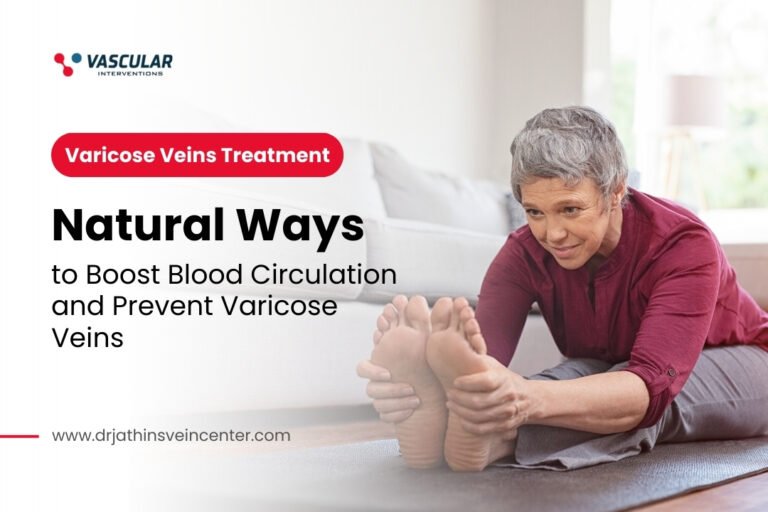Varicose veins are a common condition that affects millions of people worldwide. This condition is characterized by the appearance of twisted, enlarged veins that are visible just under the surface of the skin. While varicose veins may be unsightly, they are not always harmful. However, in some cases, they can lead to serious health problems such as blood clots, skin ulcers, and even deep vein thrombosis.
Understanding the different stages of varicose veins is important for anyone who wants to prevent or treat this condition. In this article, we will explore the different varicose veins stages and what can be done to manage them.
Stage 1: Spider Veins
Spider veins, also known as telangiectasias, are the earliest stage of varicose veins. They are small, thin, and often reddish or blue in colour. Spider veins usually occur on the legs or face, but they can appear anywhere on the body. Spider veins are not a serious medical condition, but they can be unsightly and may cause some discomfort such as itching or burning.
Spider veins are caused by the dilation of small blood vessels near the surface of the skin. This can be due to a variety of factors such as genetics, hormonal changes, pregnancy, obesity, or prolonged standing or sitting.
Treatment for spider veins usually involves lifestyle changes such as exercise, weight loss, and avoiding prolonged sitting or standing. In some cases, laser therapy or sclerotherapy may be recommended to shrink the veins.
Stage 2: Varicose Veins
Varicose veins are larger and more pronounced than spider veins. They are typically blue or purple in colour and may bulge or twist under the skin. Varicose veins are usually found in the legs or feet, but they can occur anywhere in the body.
Varicose veins are caused by the failure of the valves in the veins that prevent blood from flowing backward. When these valves do not function properly, blood can pool in the veins, causing them to stretch and become enlarged.
Varicose veins can cause discomfort such as pain, swelling, and aching. They can also increase the risk of more serious health problems such as blood clots, skin ulcers, and deep vein thrombosis.
Treatment for varicose veins may include lifestyle changes such as exercise, weight loss, and avoiding prolonged sitting or standing. Compression stockings may be recommended to improve circulation and reduce swelling. In some cases, minimally invasive procedures such as endovenous laser treatment, radiofrequency ablation, or foam sclerotherapy may be recommended to close off the affected veins.
Stage 3: Chronic Venous Insufficiency
Chronic venous insufficiency (CVI) is a more advanced stage of varicose veins. It occurs when the valves in the veins are severely damaged, causing blood to pool in the legs and feet. This can lead to swelling, skin discoloration, and skin ulcers.
Chronic venous insufficiency is most commonly caused by untreated varicose veins. Other risk factors include obesity, pregnancy, and a family history of the condition.
There are several treatments available for CVI, including compression therapy, endovenous ablation, sclerotherapy, surgical removal, and lifestyle changes.
Stage 4: Deep Vein Thrombosis
Deep vein thrombosis is a serious medical condition that occurs when a blood clot forms in a deep vein in the body, usually in the leg. This can be caused by a variety of factors such as injury, surgery, prolonged bed rest, or cancer.
Deep vein thrombosis can cause pain, swelling, and redness in the affected leg. In some cases, it can lead to more serious complications such as pulmonary embolism, a condition in which a blood clot breaks off and travels to the lungs.
Treatment for deep vein thrombosis may include blood thinners to prevent the clot from getting larger or breaking off. Compression stockings may also be recommended to improve circulation and reduce swelling.
Preventing Varicose Veins
While varicose veins cannot always be prevented, there are some steps you can take to reduce your risk:
- Exercise regularly to improve circulation and strengthen your leg muscles.
- Maintain a healthy weight to reduce pressure on your veins.
- Avoid sitting or standing for prolonged periods of time.
- Wear compression stockings to improve circulation and reduce swelling.
- Elevate your legs whenever possible to reduce pressure on your veins.
Conclusion
Varicose veins are a common condition that can cause discomfort and unsightly appearance. Understanding the different stages of varicose veins is important for anyone who wants to prevent or treat this condition.
Lifestyle changes such as exercise, weight loss, balanced nutrition, and avoiding prolonged sitting or standing can help to manage varicose veins. Additionally, compression socks, massages, and exercises can all play a role in improving circulation. In more advanced cases, minimally invasive procedures such as sclerotherapy may be necessary to provide long-lasting relief from varicose veins.





